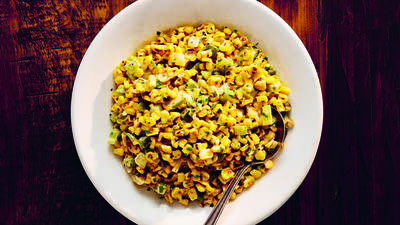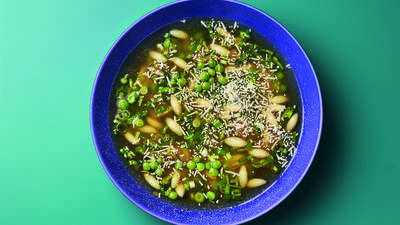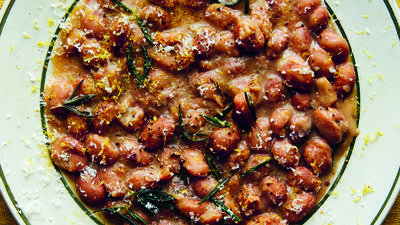
Sweet-scented Pilaf: Masala Pulao
Lacto-vegetarian (vegan if you use oil); gluten-free
Perfuming oils with whole spices has been classic to north Indian cuisine for thousands of years (no, I am not exaggerating). Western cultures call it blooming but we call it tadka. Whatever the nomenclature for this technique, the results play a pleasing game of how- much-can-you-eat-without-stopping with your palate. Give in and savor it as a side to any main dish, salad, soup, or even a starter.
Ingredients
1 cup white Indian or Pakistani basmati rice
2 tablespoons Ghee (homemade or store-purchased) or canola oil
1 teaspoon cumin seeds
1/2 teaspoon whole cloves
6 green or white cardamom pods
2 fresh or dried bay leaves
2 cinnamon sticks (each 3-inches long)
1 small red onion, cut in half lengthwise and thinly sliced
1 teaspoon coarse kosher or sea salt
Procedure
1. Place the rice in a medium-size bowl. Fill the bowl halfway with water, to cover the rice. Gently rub the slender grains between the fingers of one hand, without breaking them, to wash off any dust or light foreign objects (like loose husks), which will float to the surface. The water will become cloudy. Drain this water (you don't need a colander for this. I just tip the bowl over the sink to pour off the water making sure the rice stays in the bowl.) Repeat three or four times, until the water, after you rinse the grains, remains relatively clear; drain. Now fill the bowl halfway with cold water and let it sit at room temperature until the kernels soften, 20 to 30 minutes; drain.
2. Heat the ghee in a medium-size saucepan over medium-high heat. Once it appears to shimmer, sprinkle in the cumin, cloves, cardamom, bay leaves, and cinnamon. The spices will sizzle, turn reddish brown, crackle, and scent the air with sweet aromas, 30 seconds to 1 minute. Add the onion and stir-fry the slices until they are lightly brown around the edges, 3 to 5 minutes.
3. Add the drained rice, and coat the grains with the onion and whole spices by tossing them together gently. Pour in 1½ cups cold tap water, and sprinkle in the salt. Stir the rice once or twice to incorporate the ingredients. Allow the water to boil, uncovered, still over medium-high heat, until it has evaporated from the surface and craters are starting to appear in the rice, 5 to 8 minutes. Now (and not until now) stir once or twice to bring the partially cooked layer from the bottom of the pan to the surface. Cover the pan with a tight-fitting lid and reduce the heat to the lowest possible setting. Steep for 8 to 10 minutes (8 for an electric burner, 10 for a gas burner). Then turn off the heat and let the pan stand on that burner, undisturbed, for an additional 10 minutes.
4. Uncover the pan, fluff the rice with a fork, and serve. You may choose to remove the cloves, bay leaves, cardamom, and cinnamon before you serve. I usually leave them in since they continue to perfume the rice and just instruct the folks eating the rice to watch for those whole spices and eat around them.
Tips
The whole spices used here are some of the most common spices used in some of the versions of Garam masala. Here they are left whole, gently infusing nutty clarified butter with subtle aromas and tastes. Great proof that not all garam masalas are ground in northern India.
Before you go...
Each week, The Splendid Table brings you stories that expand your world view, inspire you to try something new, and show how food connects us all. We rely on your generous support. For as little as $5 a month, you can have a lasting impact on The Splendid Table. And, when you donate, you’ll join a community of like-minded individuals who love good food, good conversation, and kitchen companionship. Show your love for The Splendid Table with a gift today.
Thank you for your support.
Donate today for as little as $5.00 a month. Your gift only takes a few minutes and has a lasting impact on The Splendid Table and you'll be welcomed into The Splendid Table Co-op.



